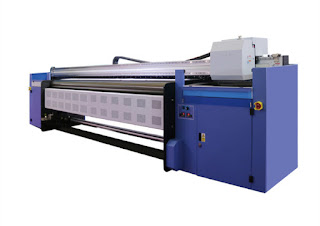Digital Textile Printing – a revolutionary transformation compared to conventional inkjet printing
Digital textile printing that did start towards the end of the 1980s but actually caught the imagination of the textile industry in the early 90s, was a revolutionary change from what the fashion world had experienced till then.
Referred to as direct-to-garment orienting, DTG printing or digital garment printing, it is a process of printing on textiles and garments using specialized or modified Inkjet Technology.
Inkjet technology is a method for depositing liquid droplets on a substrate. It was originally developed for the publishing industry, but has become a popular method in digital fabrication of electronic and mechanical devices.
Inkjet printing and inkjet technology are many a time used interchangeably but are different.
Inkjet printing refers to that generally done for the publishing industry; it is used for printing graphical images. Inkjet technology refers to general purpose fabrication through the use of ink jetting.
Since the early 1990s inkjet technology through innovative products and specially developed inks known as dye-sublimation or disperse direct ink, have made it possible for printers to print directly on fabrics. This ushered in a huge wave of experimentation where different types of fabrics were tested with different types of inks.
Digital textile printing started in the late 1980s as a possible replacement for analog screen printing.
With the development of a dye-sublimation printer in the early 1990s, it became possible to print with low energy sublimation inks and high energy disperse direct inks directly onto textile media, as opposed to print dye-sublimation inks on a transfer paper and, in a separate process using a heat press, transfer it to the fabric.
A dye-sublimation printer is a computer printer which uses heat to transfer dye onto materials such as a plastic, card, paper, or fabric. The sublimation name was first applied because the dye was considered to make the transition between the solid and gas states without going through a liquid stage. This understanding of the process was later shown to be incorrect. There is some liquefying of the dye. Since then, the process is sometimes known as dye-diffusion, though this find has not done away with the original name.
A heat press is a machine engineered to imprint a design or graphic on a substrate, such as a T-shirt, with the application of heat and pressure for a preset period of time. While heat presses are often used to apply designs to fabrics, specially designed presses can also be used to imprint designs on mugs, plates, jigsaw puzzles, caps, and other products.
More info:
Tel: 86-025-86628894
Whatsapp: +86 18851084450
E-mail: janezhang940213@gmail.com
Website:www.ink-sublimation.com
Company Name: Fei Yue Digital Technology Co.,LTD
Address: Central Road 323, Nanjing, Jiangsu, China
What is Digital Textile Printing after all?
Referred to as direct-to-garment orienting, DTG printing or digital garment printing, it is a process of printing on textiles and garments using specialized or modified Inkjet Technology.
That brings up the question – what does Inkjet Technology mean?
Inkjet technology is a method for depositing liquid droplets on a substrate. It was originally developed for the publishing industry, but has become a popular method in digital fabrication of electronic and mechanical devices.
Inkjet printing and inkjet technology are many a time used interchangeably but are different.
Inkjet printing refers to that generally done for the publishing industry; it is used for printing graphical images. Inkjet technology refers to general purpose fabrication through the use of ink jetting.
Printing directly on fabrics
Since the early 1990s inkjet technology through innovative products and specially developed inks known as dye-sublimation or disperse direct ink, have made it possible for printers to print directly on fabrics. This ushered in a huge wave of experimentation where different types of fabrics were tested with different types of inks.
Digital textile printing started in the late 1980s as a possible replacement for analog screen printing.
With the development of a dye-sublimation printer in the early 1990s, it became possible to print with low energy sublimation inks and high energy disperse direct inks directly onto textile media, as opposed to print dye-sublimation inks on a transfer paper and, in a separate process using a heat press, transfer it to the fabric.
A dye-sublimation printer is a computer printer which uses heat to transfer dye onto materials such as a plastic, card, paper, or fabric. The sublimation name was first applied because the dye was considered to make the transition between the solid and gas states without going through a liquid stage. This understanding of the process was later shown to be incorrect. There is some liquefying of the dye. Since then, the process is sometimes known as dye-diffusion, though this find has not done away with the original name.
A heat press is a machine engineered to imprint a design or graphic on a substrate, such as a T-shirt, with the application of heat and pressure for a preset period of time. While heat presses are often used to apply designs to fabrics, specially designed presses can also be used to imprint designs on mugs, plates, jigsaw puzzles, caps, and other products.
More info:
Tel: 86-025-86628894
Whatsapp: +86 18851084450
E-mail: janezhang940213@gmail.com
Website:www.ink-sublimation.com
Company Name: Fei Yue Digital Technology Co.,LTD
Address: Central Road 323, Nanjing, Jiangsu, China




At HGS, We understand the changing needs of printing industry. For execute your new collections every time, we make highly innovative & cost saving printers every time, which bears the exceptionality of high definition digital printing.
回复删除Visit here: www.hgsmachines.com